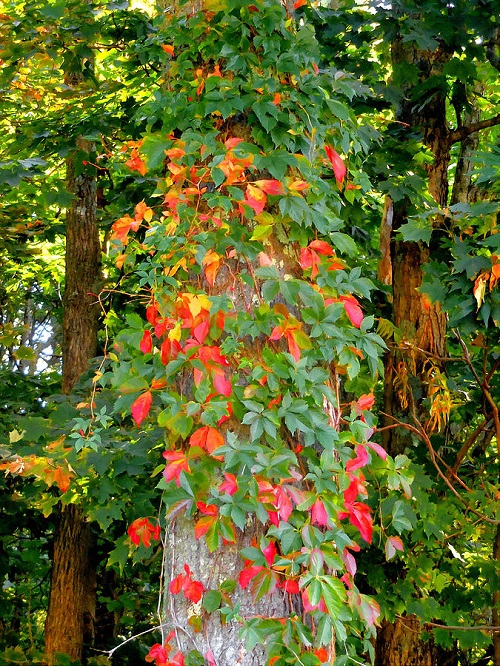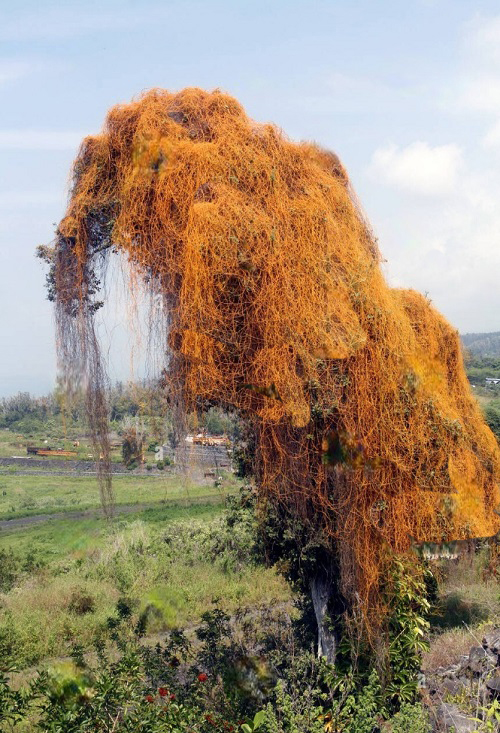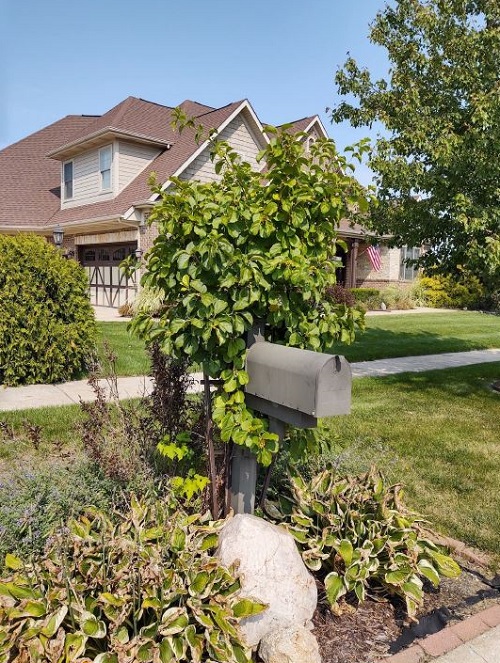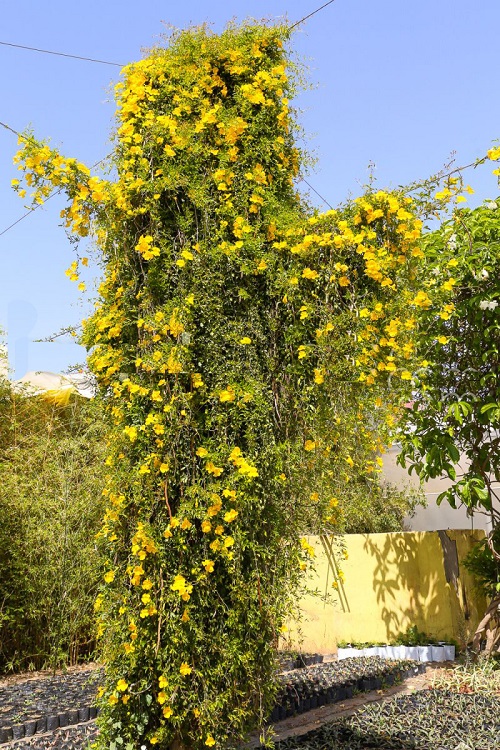Vines that Kill Trees can be a menace in the long run, not only causing havoc to your favorite specimen but also to the garden.
As these seemingly harmless plants weave their way up tree trunks, they may slowly strangle and suffocate them, leading to a slow, unnoticed demise. This comprehensive guide will uncover the truth about the treacherous Vines that Kill Trees.
Do not miss these indoor flowering vines
Vines that Kill Trees
1. Strangler Fig

Botanical Name: Ficus aurea
The Strangler Fig starts its life as a harmless epiphyte, growing on the surface of a host tree. Gradually, it sends roots down to the ground, enveloping the host tree’s trunk and branches.
Over time, it constricts the tree’s vascular system, effectively ‘strangling’ it and cutting off nutrient and water flow.
Control Measures:
- Regular monitoring of trees for early signs of Strangler Fig.
- Careful removal of the vine, ensuring no damage to the host tree.
2. English Ivy

Botanical Name: Hedera helix
With its classic appeal, English Ivy often climbs up trees, using them as support. Its dense foliage can overwhelm tree branches, blocking sunlight. This sunlight deprivation stunts the tree’s photosynthesis, weakening it over time.
Control Measures:
- Trim back the ivy regularly, especially near trees.
- Remove ivy from the base of trees to prevent upward growth.
7 Stunning Black Vines and Trailing Plants to Grow Indoors
3. Kudzu
Botanical Name: Pueraria montana
Known for its rapid growth, Kudzu can cover a tree entirely, blocking sunlight and adding excessive weight. The suffocation and stress caused by this weight can lead to the tree’s collapse or death.
Control Measures:
- Consistent cutting and removal of Kudzu vines.
- Application of appropriate herbicides, following environmental guidelines.
4. Dodder
Botanical Name: Cuscuta
Cuscuta, commonly known as Dodder, is a parasitic vine. It lacks chlorophyll and relies on host plants for nutrients. By attaching itself to trees and other plants, it siphons off water and essential nutrients, weakening and potentially killing the host.
Control Measures:
- Physical removal of the vine as soon as it’s spotted.
- Applying herbicides carefully, ensuring they don’t harm the host tree.
11 Flowering Vines that are Also a Term of Endearment
5. Oriental Bittersweet
Botanical Name: Celastrus orbiculatus
This climbing vine wraps tightly around trees, constricting their growth. The constricting nature can girdle trees, disrupting vascular flow and leading to death.
Control Measures:
- Manual removal of the vine, taking care not to harm the tree bark.
- Chemical control methods where manual removal is impractical.
6. Virginia Creeper

Botanical Name: Parthenocissus quinquefolia
This vine uses suckers to adhere to tree bark, potentially damaging the bark and affecting the tree’s health. The dense foliage can also compete for sunlight and nutrients.
Control Measures:
- Keeping the vine trimmed and away from tree trunks.
- Using herbicides for larger infestations, following environmental safety guidelines.
7. Cat’s Claw Creeper
Botanical Name: Dolichandra unguis-cati
Cat’s Claw Creeper is known for its climbing ability, which allows it to smother trees and shrubs, blocking sunlight and hindering photosynthesis.
Its tendrils can attach firmly to tree bark, potentially causing physical damage and stress to the host tree.
Control Measures:
- Cutting the vine at the base and carefully removing it from trees is a primary control method.
- Applying herbicide to the cut stems can prevent regrowth, but care must be taken to avoid harming the tree or other nearby plants.
8. Mile-a-Minute Weed
Botanical Name: Persicaria perfoliata
True to its name, Mile-a-Minute Weed grows quickly, covering trees and shrubs and competing for light and resources. It forms dense mats that can smother young trees and native vegetation.
Control Measures:
- Pulling the weed, including its roots, is effective, but it must be done regularly due to its rapid growth rate.
- Herbicides can control its spread, but it requires careful application to minimize environmental impact.
9. Mistletoe

Botanical Name: Viscum spp.
Mistletoe is a parasitic plant that attaches itself to trees and extracts water and nutrients, weakening the host tree. The invasive roots can cause physical damage to the bark and branches, leading to disease and decay.
Control Measures:
- Pruning the affected limbs can be effective, though care must be taken not to damage the tree further.
- Specific herbicides can be applied, but these require careful handling and application by professionals.
10. Air Potato
Botanical Name: Dioscorea bulbifera
Air Potato vines grow rapidly, covering trees and shrubs and blocking sunlight. Their weight can cause physical stress to the host trees, while the dense foliage can smother them.
Control Measures:
- Regularly removing the vines and bulbs by hand is effective but labor-intensive.
- The introduction of natural predators, like the Air Potato Leaf Beetle, has effectively controlled its spread.
11. Elephant Ear Vines
Botanical Name: Colocasia, Alocasia, and Xanthosoma
These vines can grow aggressively, overshadowing smaller plants and trees. They compete with trees for nutrients and water in the soil, impacting the tree’s health.
Control Measures:
- Keep the vines trimmed back to prevent them from overwhelming other plants.
- Careful application of herbicides can control the spread, but it should be done under expert guidance to prevent harm to other plants and the environment.









